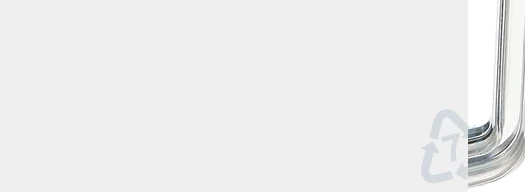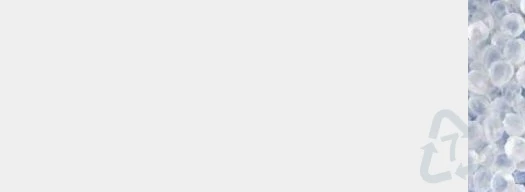
Plastics in the laboratory
THE DIFFERENT TYPES OF PLASTIC RESINS
Polyolefins
They are non-toxic, non-contaminating materials with varying degrees of breakage resistance.
At room temperature, they are resistant to almost any chemical for up to 24 hours (refer to the chemical resistance guides: tab DOCS > GUIDES).
They can be damaged by long exposure to ultraviolet light.

High density polyethylene (HDPE)
This plastic is rigid and translucent, and also robust.
- Chemical resistance : good to excellent
- Use : bottles and flasks
- Temperature range : from -100 °C to +120 °C
- Autoclavable : no

Low density polyethylene (LDPE)
Flexible and translucent, this polymer is robust and virtually unbreakable.
- Chemical resistance : good to excellent
- Use : washing bottles
- Temperature range : from -50 °C to +80 °C
- Autoclavable : no

Polypropylene (PP)
Polypropylene is translucent and has good resistance. It is stable over time, but is breakable at 0°C and can therefore break if dropped.
- Chemical resistance : good to excellent
- Use : beakers, flasks and test tubes
- Temperature range : from 0 °C to +135 °C
- Autoclavable : yes, at 121 °C

Polymethylpentene (PMP, TPX)
Rigid and of low density, this polymer has a high transparency. It is breakable at room temperature, so it can break if dropped.
- Chemical resistance : good to excellent
- Use : beakers and test tubes
- Temperature range : from -180 °C to +145 °C
- Autoclavable : yes, at 121 °C
Styrenic polymers
Amorphous materials that are hard, brittle, fragile and rigid.

Polystyrene (PS)
As transparent as glass, this polymer is rigid and non-toxic.
It breaks at room temperature, so it can shatter if dropped.
- Chemical resistance : moderate
- Use : single-use laboratory containers
- Temperature range : from -40 °C to +90 °C
- Autoclavable : no

Styrene-acrylonitrile (SAN)
This technical plastic is rigid and transparent.
- Chemical resistance : improved compared to polystyrene
- Use: beakers, volumetric flasks
- Temperature range : from +20 °C to +85 °C
- Autoclavable : no
PMMA
Rigid and transparent, polymethyl methacrylate is also resistant to ultraviolet rays.

Polymethyl methacrylate acrylic (PMMA)
- Chemical resistance : good
- Use : boxes
- Temperature range : from +20 °C to +145 °C
- Autoclavable : no
PVC
PVC can be rigid or flexible, coloured or not. It has excellent resistance to oils (but not to essential oils) and very low permeability to most gases.

Polyvinyl chloride (PVC)
- Chemical resistance : moderate
- Use : trays and tanks
- Temperature range : from -25 °C to +70 °C
- Autoclavable : no
Technical resins
They have exceptional strength and durability, suitable for demanding laboratory applications.

Polycarbonate (PC)
Transparent, strong and rigid, polycarbonate has a high impact resistance. It is an ideal material for high speed centrifugation.
- Chemical resistance : moderate
- Use : beakers and test tubes
- Temperature range : from -135 °C to +135 °C
- Autoclavable : yes, at 121 °C

Polyethylene terephthalate (PET)
As transparent as glass, PET can be slightly flexible depending on the thickness of the walls.
- Chemical resistance : moderate
- Use: bottles
- Temperature range : from -10 °C to +60 °C
- Autoclavable : no, can be sterilised by radiation or with compatible chemicals

Glycosylated Polyethylene terephthalate (PETG)
Like PET, glycosylated polyethylene terephthalate is as transparent as glass and slightly flexible depending on the thickness of the walls.
- Chemical resistance : moderate
- Use : cell culture, biological sample storage; bottles, carboys, Erlenmeyer
- Temperature range : from -40 °C to +70 °C
- Autoclavable : no, can be sterilised by radiation or with compatible chemicals
Fluoropolymers
Fluoropolymers, offer very high chemical resistance.

Polytetrafluoroethylene (PTFE)
PTFE is opaque and rigid.
- Chemical resistance : excellent
- Use : bottles, beakers and wash bottles
- Temperature range : from -200 °C to +260 °C
- Autoclavable : yes, at 121 °C

Perfluoroalkoxy (PFA)
Teflon-PFA is translucent and slightly flexible.
- Chemical resistance : excellent
- Use : bottles and beakers
- Temperature range : from -200 °C to +260 °C
- Autoclavable : yes, at 121 °C

Fluorinated ethylene propylene (FEP)
This copolymer is translucent and flexible.
- Chemical resistance : excellent
- Use : botlles and washing bottles
- Temperature range : from -100 °C to +205 °C
- Autoclavable : yes, at 121 °C
CARE AND USE
The following are general recommendations for the care and use of plastics in the laboratory. This information is purely indicative, as each plastic resin has its own properties, do not hesitate to contact us for more information.
General information
Chemicals can change the characteristics of plastics such as strength, surface, colour or dimensions. It is necessary to verify the chemical compatibility with the polymer used before handling.
Cleaning
The plastic labware can be cleaned with a non-alkaline detergent and a soft cloth or sponge.
Polystyrene and polycarbonate are particularly sensitive and more likely to be attacked by alkalis.
If you use a dishwasher, always programme short cycles and a maximum temperature of 60°C. Beyond that, the plastic and volumetric accuracy of the graduated consumables could be affected.
Due to temperature limitations, polystyrene, acrylic and polycarbonate should not be placed in the dishwasher. This may cause deterioration of their resistance. If you use an ultrasonic bath, make sure that the products are not in direct contact with the membrane.
Sterilization
Verify that the plastic is autoclavable and can withstand repeated exposure to 121°C.
It is recommended to use a 20 minute cycle at 121°C and 1 bar.
Always unscrew the caps of bottles or tubes before autoclaving. Any material obstructing the opening may cause deformation or destruction of the plastic
Heating
Never place plastic directly in contact with a flame or hot plate.
Recycling and disposal
The recycling process requires plastic products to be sorted according to their resin type, before being recovered for recycling into resins that can be used as raw material for new products.
If the product cannot be recycled, always follow the applicable regulations and laws for disposal.















